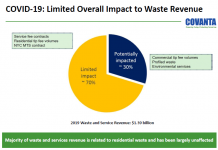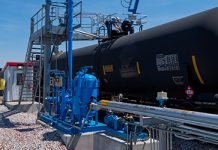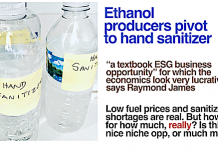by Debra Fiakas CFA
In an article posted in November I incorrectly named the product of Kior, Inc. (KIOR: Nasdaq) as cellulosic ‘ethanol’. Kior does indeed use cellulosic biomass – wood chips to be exact – but the company’s catalytic pyrolysis technology turns out crude oil that can be further refined into gasoline or diesel. Ethanol, on the other hand, is the product of a fermentation process.
There is nothing new about catalytic pyrolysis – superheating in a container with no oxygen. Oil refiners have been fracturing large, complex hydrocarbons using heat and catalysts for a long time. However, sending biomass through this process is quite different than breaking down crude oil. Hydrocarbons like crude oil are made up of hydrogen and carbon. When wood chips, for example, are processed, the end result is pyrolysis oil and a lot of char.
The pyrolysis oil holds oxygen. Here is where Kior’s proprietary catalyst comes into play. By infusing the biomass with a catalyst, the oxygen components of the pyrolysis oil can be upgraded to something closer to a hydrocarbon.
Kior management has been careful to characterize its frequent delays and setbacks as unrelated to its catalyst technology. However, just the word char should provide investors with a clue as to how there might have been problems in perfecting the process. Char is messy. Likely there has been unexpected wear and tear on the equipment and perhaps the catalyst has become unexpectedly contaminated with ash.
Kior is not the only company to pursue this technology. Ensyn Corporation has been working on its technology to use heat to thermally crack carbon-based feedstock. Ensyn calls it the Rapid Thermal Process or RTP. Ensyn makes use of heated sand to trigger the cracking of the feedstock into gases and vapors. Ensyn has reached commercial production at its Renfrew RTP Facility in Ontario, Canada. The facility can process up to 150 tons of dry material per day. The company plans another plant of similar size in cooperation with an Italian partner. An even larger plant is in the engineering stage in Malaysia.
Ensyn benefits from a partnership with Honeywell’s (HON: NYSE) UOP Division. The two have formed a joint venture called Envergent Technologies. Ensyn has several other partnerships and strategic affiliations aimed at penetrating the market with its renewable fuels. The company claims over 65 million liters of its RTP renewable fuels have been used as commercial heating fuel by industrial customers.
Unlike Kior, which must report its progress every three months to the public, Ensyn enjoys the cloak of privacy. Its failures, if it has experienced any, are kept in the family. Kior has lost more than one-third its value in the six weeks since my article in November. The company’s chief financial officer resigned unexpectedly in early December, leaving shareholders wondering if some sort financial time bomb is ticking away at Kior. Its technology may be proven, but its business model has yet to pass muster.
Debra Fiakas is the Managing Director of Crystal Equity Research, an alternative research resource on small capitalization companies in selected industries.
Neither the author of the Small Cap Strategist web log, Crystal Equity Research nor its affiliates have a beneficial interest in the companies mentioned herein.








